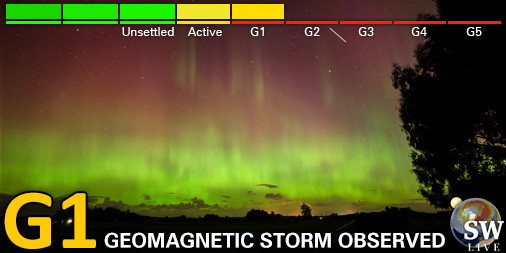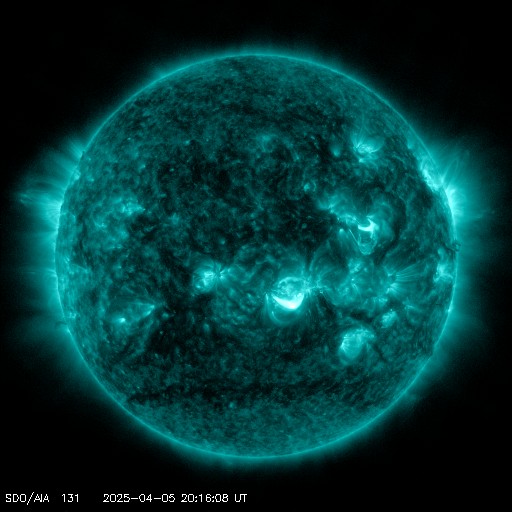Viewing archive of Sunday, 18 November 2001
Geophysical report
Any mentioned solar flare in this report has a scaling factor applied by the Space Weather Prediction Center (SWPC). Because of the SWPC scaling factor, solar flares are reported as 42% smaller than for the science quality data. The scaling factor has been removed from our archived solar flare data to reflect the true physical units.
Solar and Geophysical Activity Summary 2001 Nov 18 0245 UTCPrepared by the NOAA © SWPC and processed by SpaceWeatherLive.com
Joint USAF/NOAA Solar and Geophysical Activity Summary
SGAS Number 322 Issued at 0245Z on 18 Nov 2001 This report is compiled from data received at SWO on 17 NovA. Energetic Events
Begin Max End Rgn Loc Xray Op 245MHz 10cm Sweep 0449 0525 0611 9704 S13E42 M2.8 1n 200 150 II/IV 0500 0000 0507 II 0730 0730 0731 9704 150 0740 0740 0740 170 0746 0746 0746 120 0839 0839 0840 190
B. Proton Events
None
C. Geomagnetic Activity Summary
The geomagnetic field was quiet to
active.
D. Stratwarm
None
E. Daily Indices: (real-time preliminary/estimated values)
10 cm 199 SSN 157 Afr/Ap 011/011 X-ray Background B9.8 Daily Proton Fluence (flux accumulation over 24 hrs) GT 1 MeV 6.9e+05 GT 10 MeV 5.9e+04 p/(cm2-ster-day) (GOES-8 satellite synchronous orbit W75 degrees) Daily Electron Fluence GT 2 MeV 1.00e+06 e/(cm2-ster-day) (GOES-8 satellite synchronous orbit W75 degrees) 3 Hour K-indices Boulder 2 2 2 2 4 3 3 2 Planetary 2 3 3 3 4 3 3 3
F. Comments
None
All times in UTC
Current data suggests there is a slight possibility for aurora to appear at the following high latitude regions in the near future
Gillam, MB, Whitehorse, YT, Yellowknife, NTFairbanks, AK
Latest news
Latest forum messages
Upper atmosphere phenomena Red sprites and Blue jets 1Incoming & Unnumbered Active Regions 1667Unspecified geomagnetic activity 2228A few (probably stupid) questions about Earth's magnetic field decay 4AR 4054 6
More topicsSupport SpaceWeatherLive.com!
A lot of people come to SpaceWeatherLive to follow the Sun's activity or if there is aurora to be seen, but with more traffic comes higher server costs. Consider a donation if you enjoy SpaceWeatherLive so we can keep the website online!

Latest alerts
02:00 UTC - Geomagnetic activity
Minor G1 geomagnetic storm (Kp5) Threshold Reached: 01:50 UTC
Saturday, 5 April 2025
20:30 UTC - Geomagnetic activity
Minor G1 geomagnetic storm (Kp5) Threshold Reached: 20:20 UTC
20:24 UTC - Solar flare
Moderate M1.05 flare
20:09 UTC - Radio Blackout
Minor R1 radio blackout in progress (≥M1 - current: M1.05)
10:00 UTC - Hemispheric Power Index
The OVATION model predicts the Hemispheric Power Index to reach 78GW at 10:32 UTC
Space weather facts
| Last X-flare | 2025/03/28 | X1.1 |
| Last M-flare | 2025/04/05 | M1.0 |
| Last geomagnetic storm | 2025/04/05 | Kp6- (G2) |
| Spotless days | |
|---|---|
| Last spotless day | 2022/06/08 |
| Monthly mean Sunspot Number | |
|---|---|
| March 2025 | 134.2 -20.4 |
| April 2025 | 150.4 +16.2 |
| Last 30 days | 131.6 -13.4 |





